#anguilla rostrata
Photo

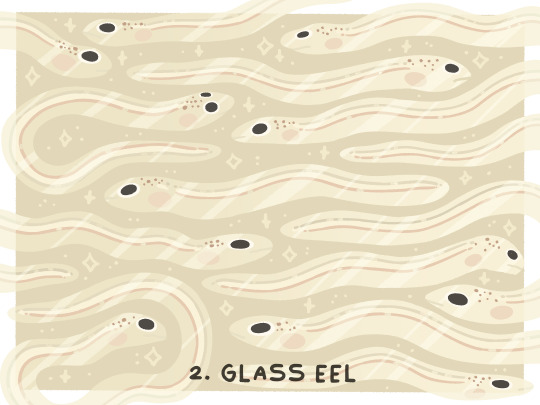
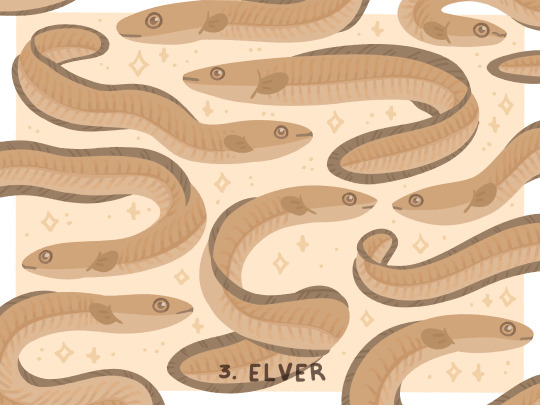


✨ The Metamorphosis of Eel ✨
#originals#eel#eels#eel art#leptocephalus#glass eel#elver#yellow eel#silver eel#eel metamorphosis#european eel#american eel#japanese eel#anguilla#anguilla anguilla#anguilla rostrata#anguilla japonica#chibi art#chibi artist#procreate drawings#chibi eels
5K notes
·
View notes
Text
Happy World Eel Day!
Sturgeon are my main love (and hyperfixation) but anguilliformes hold a similar place in my heart. So, in honor of World Eel Day (May 19th), here is an eel comic that I made for an oceanography class -- written, sketched, and lined by me, and then colored and rendered by the bestie.





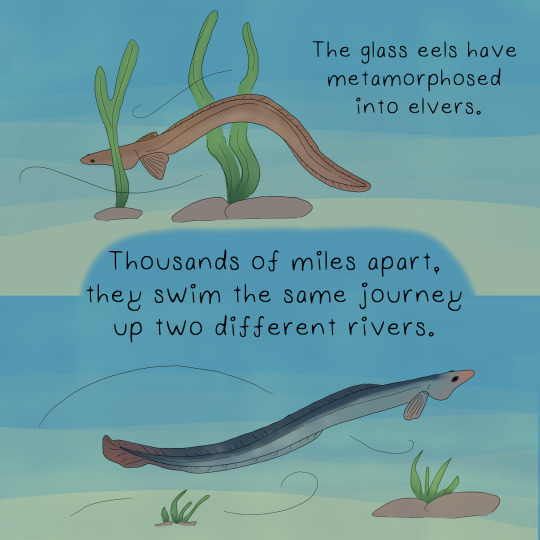
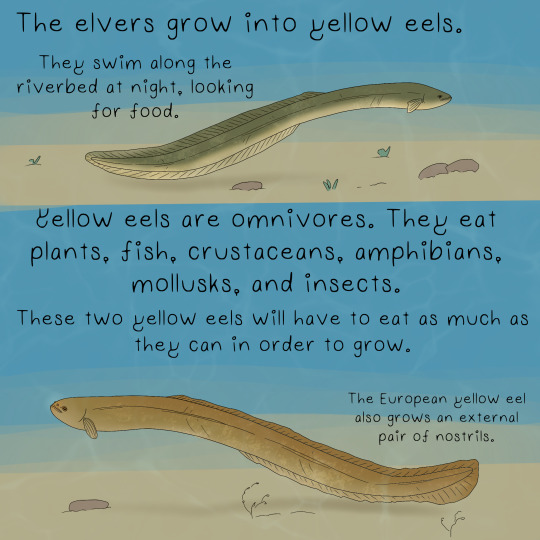



#world eel day#eel day#eels#anguilla rostrata#anguilla anguilla#european eel#american eel#ichthyology#marine biology#not sturgeon???#will i be arrested
577 notes
·
View notes
Text
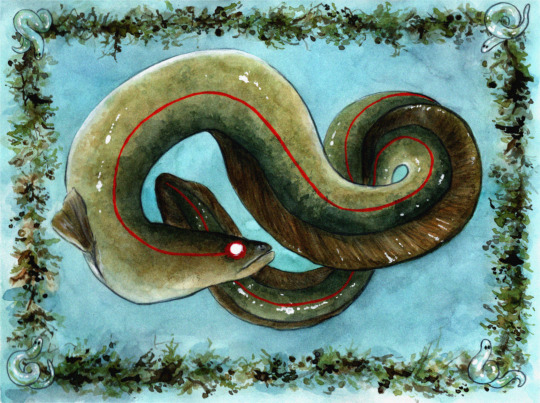
longing to return
original
#eels#eel#illustration#watercolor#art#painting#anguilla#anguilla rostrata#sargassum#fishart#sea#bigeelsart
135 notes
·
View notes
Text
VA Native Fish Hunting - 24

Today was a fun trip. I've been to this beach a number of times for glass hunting (successful) and for shark tooth hunting (not so successful), but not for dedicated fishing. I did find a couple of neat finds, which goes to show you it pays off to explore old places with a new eye.

Last hunt, I included a picture of some sea lettuce (Ulva spp) I found but thought it lacked some context on how it naturally looked since I had it above water level. Using some advice from a tumblr follower, I brought my acrylic holding container with me. Sea lettuce is SO COOL when submerged and thought it was worth including a picture here.
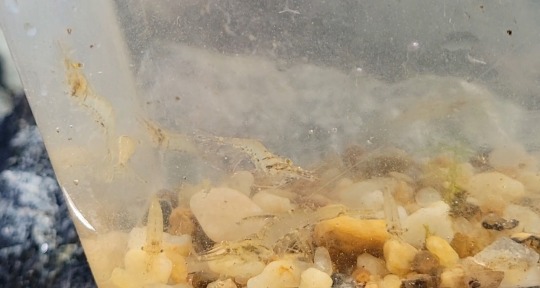
Lots more Glass Shrimp (Palaemon spp) here. By contrast with the sea lettuce, glass shrimp are harder to get photos of when submerged in their home (murky) water. Still. Neat critters.
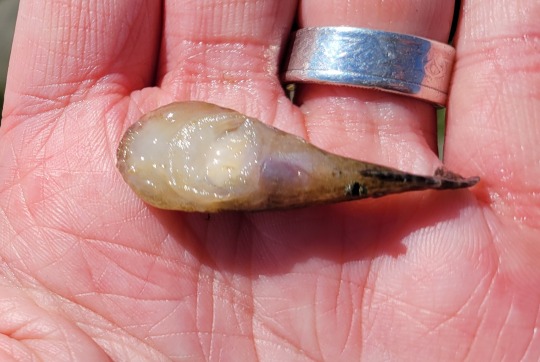

This Skilletfish (Gobiesox strumosus) was washed up/deceased, sadly. But still interesting because a) it's my first time finding this species in this area of the river, and b) it being dead means I can show off their suction cup like belly.

A first for me! This American Eel (Anguilla rostrata) is the first specimen I've caught of this species. Around 5 or 6 inches long, it was absolutely restless looking for a way out - which reflects how eagerly they escape the home aquarium. They also are thought to live upwards of 80 years, so I hope this dude has a nice long life!

Fair enough, I was unsure if I would catch anything, so I found this inlet to the river I was fishing on and tossed in a few minnow traps. Might as well hedge your bets, right?

I caught a few Eastern Mosquitofish (Gambusia holbrooki) here, and unsurprising as they are among the most common species in this area. Freshwater? Brackish? Saltwater? You'll probably find some. But I love the mottling coloration on this fella - I think they are handsome in a subdued way.
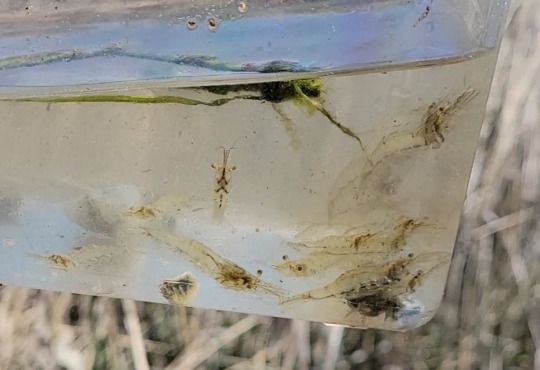
More shrimps! A little easier to see here butttt still a little hard with stirred up silt.

I probably caught about 20 Mummichogs (Fundulus heteroclitus) aross my traps. No exaggeration, some of my favorite native fishes in this area - especially for home use but I think they are pretty in general.

Most of the Mummichogs were smallish but this dude was a chonker. Mine at home are pushing 5 inches but at 3.5 or so, this killifish is still impressive. Love the slight teal coloration the big ones have sometimes.
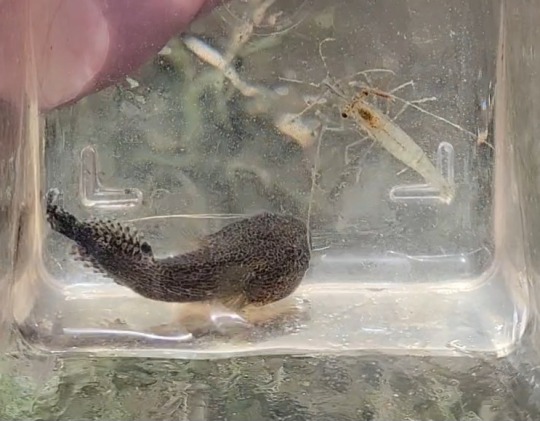
Last find was this live Skilletfish! That coloration is fantastic, much better than the last few washed out ones I've come across. This guy more than any other catch today has tempted me to start up a native biotope tank. What a cool cat!
22 notes
·
View notes
Text
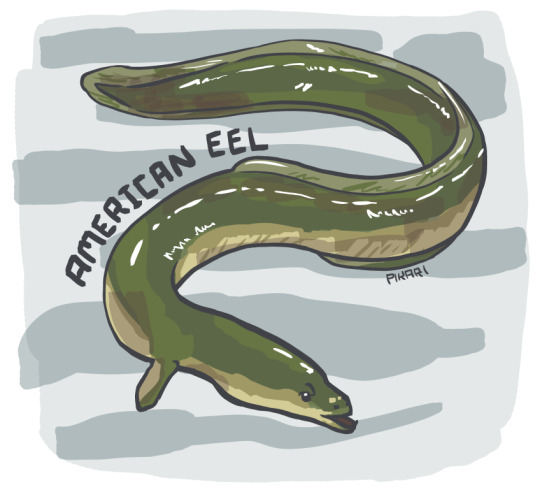
Eel always be there for you, darling ♥
American Eel (Anguilla rostrata)
Eastern N. America - freshwater rivers with migrations to the Sargasso Sea
Status: Endangered
Threats: dams, dredging, overfishing, invasive species
#fish#eel#freshwater fish#conservation#fish art#too early for valentines puns?#north america#usa#canada#caribbean
30 notes
·
View notes
Text
Unlocking the Secrets of River Eel Fishing: A Guide to Angling Adventure
Exploring the Wonders of River Eel Fishing
Fishing for river eels is a time-honored tradition that blends skill, patience, and a deep understanding of aquatic ecosystems. Revered for their elusive nature and delectable taste, eels have captivated anglers for generations. From the serene streams of rural countryside to the bustling waterways of urban landscapes, the pursuit of these enigmatic creatures offers a unique and rewarding experience for fishing enthusiasts. In this article, we delve into the intricacies of fishing for river eels, uncovering the techniques, equipment, and tips essential for a successful angling adventure.
Understanding River Eels: An Enigmatic Species
River eels, characterized by their slender, snake-like bodies and smooth, scaleless skin, inhabit freshwater rivers, streams, and estuaries across the globe. While several species of eels exist, the American eel (Anguilla rostrata) is particularly sought after by anglers for its succulent flesh and challenging behavior. These remarkable creatures undergo a fascinating lifecycle, beginning as transparent larvae in the ocean before migrating thousands of miles to freshwater rivers to mature and spawn. Despite their widespread distribution, eels maintain an air of mystery, often lurking in the depths and evading detection.
Choosing the Right Fishing Gear
Equipping yourself with the appropriate gear is essential for a successful river eel fishing excursion. Due to their tenacious nature and habitat preferences, specialized equipment is often required to entice these elusive creatures. A medium to heavy-action spinning rod paired with a durable reel spooled with a braided line provides the necessary strength and sensitivity to detect subtle strikes and handle the spirited fights eels are known for. Additionally, incorporating a fluorocarbon leader into your rig helps prevent line breakage caused by the eel's abrasive skin and sharp teeth.
Selecting Effective Baits and Lures
Selecting the right bait or lure can significantly influence your success when fishing for river eels. While eels possess a keen sense of smell and are attracted to natural bait such as worms, small fish, or cut bait, artificial lures can also prove effective, particularly in situations where live bait is scarce or impractical. Soft plastic lures resembling worms or eels, fished slowly along the river bottom, can mimic natural prey and trigger aggressive strikes from hungry eels. Experimenting with different colors, sizes, and retrieval techniques can help determine the most productive presentation for your fishing conditions.
Mastering Techniques for River Eel Fishing
Patience and persistence are paramount when fishing for river eels. Unlike more active predators, eels often feed opportunistically and may require extended periods of observation and experimentation to locate and entice. Targeting areas with dense vegetation, submerged structures, or rocky outcrops where eels congregate provides the best chance of success. Utilizing stealthy approaches and minimizing disturbances to the surrounding environment can increase your chances of enticing wary eels into striking. Once hooked, eels are notorious for their formidable strength and cunning tactics, requiring finesse and steady pressure to land successfully.
Respecting Conservation and Sustainability
As stewards of the environment, ze consultation and sustainability when fishing for river eels. Overfishing, habitat destruction, and pollution threaten eel populations worldwide, necessitating responsible angling practices to ensure their continued survival. Adhering to catch-and-release principles whenever possible, practicing proper fish handling techniques, and supporting initiatives aimed at restoring eel habitats are crucial steps in preserving these invaluable species for future generations to enjoy.
Embarking on an Adventure
Fishing for river eels is more than just a recreational pursuit—it's an immersive journey into the heart of nature's mysteries. Whether casting lines along tranquil streams or navigating bustling urban waterways, the pursuit of these elusive creatures offers a unique blend of challenge, excitement, and connection to the natural world. By mastering the techniques, equipment, and ethics of river eel fishing, anglers can embark on unforgettable adventures while contributing to the conservation and sustainability of these remarkable species. So, grab your gear, venture forth, and immerse yourself in the art of angling for river eels.
0 notes
Note
Jan has transformed into a Anguilla Rostrata
The effort it took to make me google something I applaud you good anon
1 note
·
View note
Text

this american eel, photographed by clinton & charles robertson, can survive out of water for quite some time! parts of their very long journey to the sargasso sea include squiggling through various moist environments like marshy grass.
59 notes
·
View notes
Photo
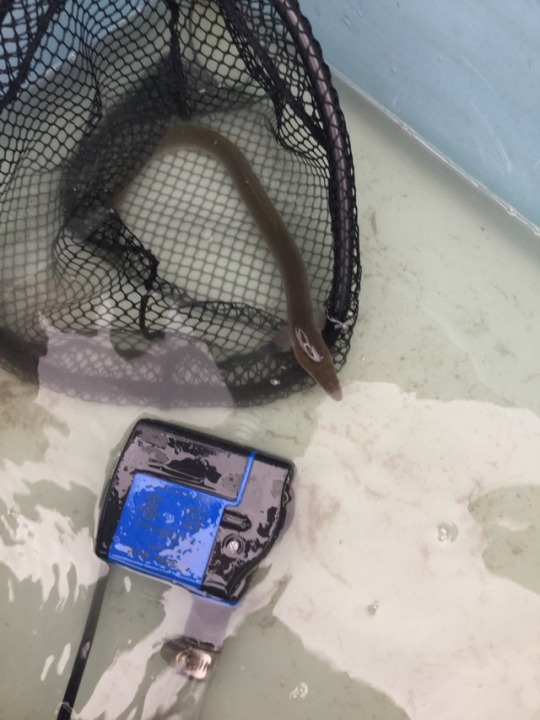
dat feel when you're an eel
#American eel#Anguilla rostrata#eel#freshwater eel#migratory eel#freshwater fish#saltwater fish#brackish water fish#nanf#nanfa
20 notes
·
View notes
Text
Glass eels, one of the early stages of the American Eel (Anguilla rostrata)! Professor took us out to go catch some and I'm surprised how many we were able to get!
#breadclips#ecology#freshwater ecology#this is the first time I'm posting something like this please ask if I need to tag anything
15 notes
·
View notes
Photo

⟠ freak behind glass ⟠
#silver eel#anguilla#anguilla anguilla#anguilla rostrata#anguilla japonica#european eel#american eel#japanese eel#eels#eel art#pixel art#originals
442 notes
·
View notes
Text
State of Freshwater Eels in the South Pacific
Freshwater eels of the genus Anguilla consists of 16 species and 3 subspecies that are distributed in the Indo-Pacific and North Atlantic Ocean. They are consumed as delicacies throughout their dispersal range especially in Japan, Europe and the Americas. With growing demand for eels on the international market the three major species currently cultured in the aquaculture industry, Japanese eels A. japonica, European eel A. anguilla and American eel A. rostrata have all been severely overfished with populations on the brink of extinction. Anushka Hewavitharane

Authored by Anushka Hewavitharane
Freshwater eels of the genus Anguilla consists of 16 species and 3 subspecies that are distributed in the Indo-Pacific and North Atlantic Ocean. They are consumed as delicacies throughout their dispersal range especially in Japan, Europe and the Americas. With growing demand for eels on the international market the three major species currently cultured in the aquaculture industry, Japanese eels A. japonica, European eel A. anguilla and American eel A. rostrata have all been severely overfished with populations on the brink of extinction.
Read More...Full Text
1 note
·
View note
Text
Mách mẹ cách nấu cháo lươn cho bé ăn dặm thơm ngon, bổ dưỡng - Hellobacsi
Cách nấu cháo lươn cho bé ăn dặm không khó nhưng mẹ cần lưu ý ở khâu sơ chế và chế biến để đảm bảo vệ sinh mà không mất đi dưỡng chất quý giá trong thịt lươn.
Bé cưng bước vào giai đoạn ăn dặm, mẹ sẽ bận bịu hơn rất nhiều khi phải chế biến các món cháo dinh dưỡng cho bé đổi vị, trong đó có cháo lươn. Lươn là một loại thực phẩm lành tính, giàu dưỡng chất nên các món cháo từ thịt lươn dành cho bé ăn dặm luôn được các mẹ ưu tiên. Trong bài viết này, Hello Bacsi giới thiệu đến bạn cách nấu cháo lươn cho bé với nhiều loại nguyên liệu khác nhau để con yêu đổi vị, hấp thu đầy đủ dưỡng chất.
Hàm lượng dinh dưỡng của thịt lươn
100 gram thịt lươn cung cấp:
Năng lượng: 285 calo
Chất đạm: 18,7g
Chất béo: 0,9g
Phospho: 150 mg
Canxi: 39 mg
Sắt: 1,6 mg
Ngoài ra còn có các vitamin A, D, các vitamin nhóm B (B1, B3, B2, B6) cùng các khoáng chất như natri, kali…
Theo Đông y, thịt lươn có tính cam ôn, bổ kinh tỳ vị, có công dụng chủ trị các vấn đề sức khỏe như: bổ hư tổn, khu phong trừ thấp, cường kiện gân cốt.
Người phương Đông xếp thịt lươn vào một trong bốn món ngon dưới nước (tứ đại hà tiên) nên thường được dùng làm món ăn để bồi bổ cho người bệnh, người già và trẻ nhỏ.
Mách mẹ cách chọn và cách làm lươn nấu cháo cho bé
Cách chọn mua lươn ngon
Bạn nên chọn con lươn còn sống, di chuyển nhanh, sống lưng đen bóng, phần bụng có màu vàng, không bị thương hay trầy xước, đuôi dài. Ngoài ra, bạn nên chọn những con lươn có trọng lượng khoảng 350 gram trở lên, không nên vì bé ăn ít mà chọn mua lươn nhỏ vì thịt sẽ tanh và không ngon.
Cách làm lươn nấu cháo cho bé không bị tanh
Cách làm lươn nấu cháo cho bé không khó, bạn chỉ cần thực hiện theo các bước dưới đây. Nếu không muốn nhờ người bán làm thịt lươn vì sợ không đảm bảo vệ sinh và mất đi phần huyết giàu dưỡng chất, bạn có thể tự làm lươn tại nhà theo hướng dẫn sau:
Cho 1 nắm muối hoặc nửa bát giấm vào thau, cho lươn vào thau rồi đậy lại cho chắc để lươn quẫy và ra hết nhớt. Bạn nên để lươn quẫy khoảng 5 – 10 phút.
Nếu lươn chưa chết, bạn dội nước sôi hoặc dùng chày đập đầu cho lươn chết.
Lươn chết, bạn mang ra dùng dao cạo nhẹ hoặc dùng giấy báo tuốt nhẹ cho hết nhớt, rồi rửa sạch lại với nước.
Cắt bỏ đầu lươn và rạch bụng lươn để loại bỏ nội tạng, xả lại với nước cho sạch. Nếu muốn giữ lại phần tiết lươn thì bạn không nên cắt bỏ đầu và mổ lươn.
Bỏ lươn vào thố hoặc tô cùng với vài lát gừng để khử mùi tanh và hấp cách thủy trong khoảng 15 – 20 phút cho lươn chín.
Khi lươn chín, đợi nguội, nhẹ nhàng gỡ bỏ phần da lươn, chỉ lấy phần thịt và tiết lươn. Phần xương lươn, bạn có thể giã nhỏ, hòa với nước dùng, lọc qua rây lấy ngọt nước nấu cháo cho bé.
Bạn có thể chia thịt lươn làm nhiều phần, trữ trong ngăn đá và nấu cháo cho bé ăn dần.
Cách nấu cháo lươn cho bé ăn dặm thơm ngon, bổ dưỡng
1. Cháo lươn bí đỏ
Nguyên liệu
Thịt lươn đã hấp chín: 15 – 20g
Gạo: 1 nắm (khoảng 3 thìa đầy)
Bí đỏ: 1 miếng cỡ 2 bao diêm
Dầu ăn cho bé ăn dặm
Cách nấu cháo cho bé
Bí đỏ rửa sạch, gọt vỏ, thái nhỏ dạng quân cờ.
Gạo vo sạch cho vào nồi cùng với bí đỏ và nước, nấu trên lửa vừa cho cháo chín mềm.
Cháo chín, bạn có thể vớt bí ra, tán nhuyễn, rây mịn rồi trộn vào cháo cho bé.
Tiếp theo, bạn cho thịt lươn đã hấp chín vào, đảo đều, chờ cháo sôi trở lại thì tắt bếp.
Múc cháo ra bát, khi cháo nguội bớt thì cho một thìa dầu ăn vào đảo đều, cho bé ăn khi cháo còn ấm.
2. Cháo lươn đậu xanh
Nguyên liệu
Thịt lươn đã hấp chín: 15 – 20g
Gạo: 1 nắm (khoảng 3 thìa đầy)
Đậu xanh cà: 10g
Dầu ăn cho bé ăn dặm.
Cách nấu cháo cho bé
Đậu xanh nhặt bỏ hạt sâu, mốc rồi đãi sạch, ngâm nước khoảng 1 – 2 giờ cho nở rồi đãi bỏ phần vỏ ngoài.
Gạo vo sạch cho vào nồi cùng đậu xanh đã đãi bỏ vỏ, cho nước vào nấu trên lửa vừa cho chín mềm.
Khi cháo chín hạt gạo bung đều, đậu xanh nở mềm thì cho thịt lươn vào đảo đều, tắt bếp.
Múc cháo ra bát, khi cháo nguội bớt thì cho 1 thìa dầu ăn vào đảo đều, cho bé ăn khi cháo còn ấm.
3. Cháo lươn rau ngót
Nguyên liệu
Thịt lươn hấp chín: 20 g
Rau ngót: 10 g
Gạo tẻ: 20g
Dầu ăn dành cho bé ăn dặm.
Cách nấu cháo cho bé
Vo gạo cho sạch rồi cho vào nồi cùng lượng nước vừa đủ, đun trên lửa vừa cho cháo chín mềm.
Rau ngót rửa sạch và thái nhỏ, mịn.
Cháo chín, cho rau ngót vào, khuấy đều, nấu trong khoảng 2 phút để rau chín.
Tiếp đó, bạn cho lươn vào, đảo đều đợi cháo sôi trở lại thì tắt bếp.
Múc cháo ra chén, cho 1 thìa dầu ăn d��nh cho bé ăn dặm vào, khuấy đều, cho bé ăn khi cháo còn ấm.
4. Cháo lươn cà rốt, đậu Hà Lan
Nguyên liệu
Gạo tẻ: 1 nắm (khoảng 3 thìa đầy)
Thịt lươn đã hấp chín: 15 – 20g
Cà rốt: 1 miếng cỡ bao diêm
Đậu Hà Lan: 20 g
Dầu ăn dành cho bé ăn dặm.
Cách nấu cháo cho bé
Đậu Hà Lan rửa sạch, cho vào chén nhỏ, hấp cách thủy cho chín. Đậu chín, dùng muỗng tán mịn, lọc qua rây rồi cho vào cháo.
Cà rốt rửa sạch, bào bỏ vỏ, băm nhỏ hoặc cắt miếng nhỏ. Để có thể băm nhỏ cà rốt dễ dàng, mẹ nên dùng dụng cụ bào sợi bào cà rốt thành sợi mỏng, thái nhỏ rồi hãy băm.
Gạo vo sạch cho vào nồi cùng cà rốt và nấu trên lửa vừa.
Khi cháo chín nhừ, nếu bạn cắt cà rốt dạng miếng nhỏ thì nên vớt cà rốt ra dùng muỗng tán cho mịn trước khi cho bé ăn. Nếu bé chưa ăn được thức ăn thô, sau khi tán nhuyễn cà rốt, mẹ nên lọc qua rây cho mịn.
Cho thịt lươn vào nồi cháo và đảo đều.
Tắt bếp, múc cháo ra bát, đợi cháo hơi nguội cho 1 thìa dầu ăn vào đảo đều, cho bé ăn khi cháo còn ấm.
5. Cháo lươn khoai môn
Nguyên liệu
Thị lươn hấp chín: 50g
Gạo tẻ: 1 nắm to (khoảng 3 thìa đầy)
Khoai môn: 50g (khoảng ¼ củ cỡ vừa)
Ngò rí
Dầu ăn dành cho trẻ ăn dặm.
Cách nấu cháo cho bé
Nếu chưa có thịt lươn làm sẵn, mẹ nên làm lươn theo hướng dẫn ở trên.
Khoai môn gọt sạch vỏ, thái miếng vuông dạng quân cờ.
Gạo vo sạch cho vào nồi cùng khoai môn cùng lượng nước vừa đủ nấu trên lửa vừa cho cháo chín nhừ.
Ngò rí, rửa sạch, vẩy ráo, thái nhỏ.
Khi cháo chín mẹ cho thịt lươn đã xé nhỏ, tiết lươn đã hấp chín vào đảo đều.
Chờ cho cháo sôi trở lại thì nêm ngò rí thái nhỏ vào khuấy đều cho chín.
Tắt bếp, múc cháo ra bát, đợi cháo nguội bớt thì cho 1 thìa súp dầu ăn vào trộn đều.
Bạn nên cho bé ăn khi cháo còn ấm để tránh cháo bị tanh.
Những lưu ý trong khi sơ chế và chế biến lươn
Lươn là loài động vật sống dưới nước, thường chui rúc trong bùn lầy và là loài ăn tạp nên chúng có thể nhiễm các ký sinh trùng như anguilliticoloides crasus, anguilla rostrata, anguilla japonica… và ấu trùng gnathostoma spingerum. Ấu trùng này đi vào cơ thể có thể ký sinh ở da, hạch, mắt, não gây ảnh hưởng đến sức khỏe.
Do đó, khi chế sơ chế cũng như chế biến lươn, bạn cần làm sạch (rửa lươn với giấm hoặc nước cốt chanh hay muối), loại bỏ nội tạng trước khi chế biến và nấu thịt lươn chín kỹ.
Trong thịt lươn chứa rất nhiều protein, trong đó có hợp chất histidine tốt cho cơ thể, nhưng khi lươn chết, hợp chất này bị các vi khuẩn tấn công gây ô nhiễm và có thể chuyển hóa thành chất độc histamine, một chất độc gây ra dị ứng miễn dịch có hại cho con người. Do đó, bạn tuyệt đối không dùng lươn đã chết hoặc ươn để chế biến món ăn.
Lan Quan / HELLO BACSI
The post Mách mẹ cách nấu cháo lươn cho bé ăn dặm thơm ngon, bổ dưỡng appeared first on Hello Bacsi.
0 notes
Text
VA Native Fish Hunting - 18
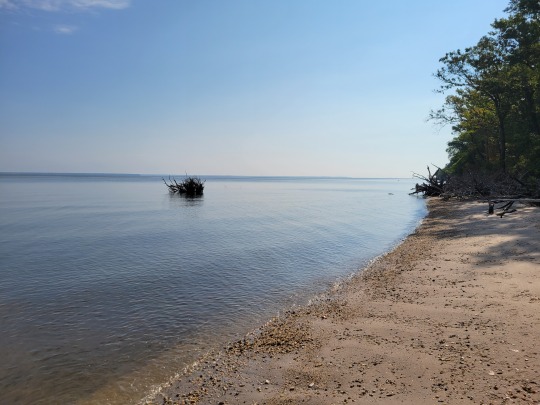
Something that I think is neat about going out and hunting for fish in local areas is that no matter how many times you do it, you are bound to experience something new. Case in point is this trip. I’ve been here a dozen or more times for either fishing, dog walking, or looking for shark teeth. And even with that in mind, I found some new fish I’ve not capture before. So if you are interested, there is more below the cut!

Well, okay THIS wasn’t new. The most populous fish in the area have continuously been Mummichogs (Fundulus heteroclitus) for pretty much every trip I’ve taken. That’s not to say I’m still not enthused about them - they remain one of my favorite North American Native fish for their subdued beauty and hardiness. Also helps that they like the shallows, where I do a majority of my wading.
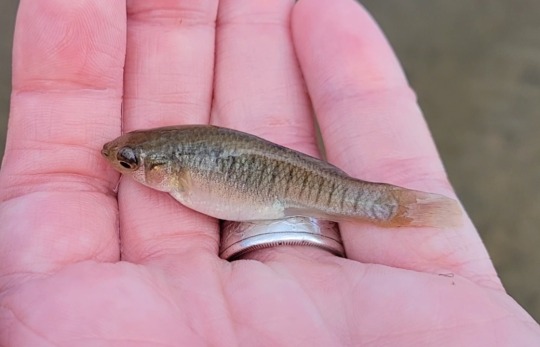
Another Mummichog - the top one was a male and this one is a female. The less flashy coloration and the round belly are the giveaway here. Guessing we are getting close to breeding season here!

New for me in this area specifically was this catfish! I had originally guessed a young Channel Catfish due to some of the spotting on the side, but later examination of the photos makes me more inclined to say a Bullhead (Ameirus spp.) of one kind or another. I think we have Browns, Whites, and Yellows locally, and of those I’m most leaning towards Yellow Bullhead (A. natalis). All are interesting fish though!
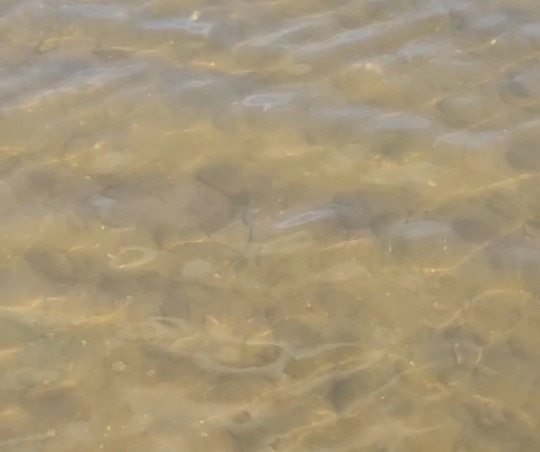
I was not able to capture this guy but got grainy bigfoot-esque video of it - this was the best still shot of the set. I spent a minute or two chasing this 1.5 foot American Eel (Anguilla rostrata) around the shallows, but he was too cautious and too wily to be caught by a big bumbling human like myself. I was still super psyched about meeting him though!

Probably the most economically important species in the area is the Blue Crab (Callinectes sapidus) and they were out in spades this day. We saw a handful of dead ones (as is sadly very common lately) but many more living ones, including a number that were mating. It’s fun watching them pick up their mate and swim away when they think you are being a creep and a close one at that.

Not sure what species of Jellyfish we have locally, sadly. A quick look online likely remedies this - I believe this to be a Bay Nettle (Chrysaora chesapeakei), but we have a few species locally, mostly moon jellies. I do like that these guys can tolerate fairly weak brackish water (1.006 or so) compared to their oceanic brethren. Fun animals.
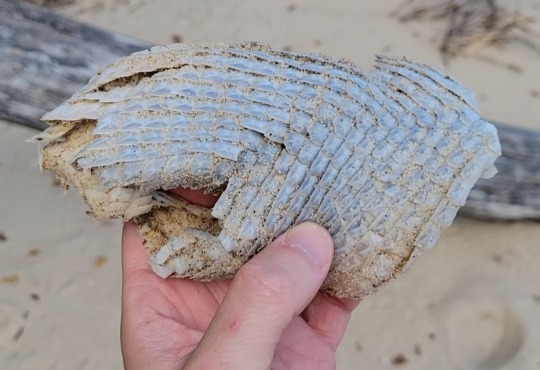
My favorite find of the trip though was this! This was a section of Longnose Gar (Lepisosteus osseus) scales that washed ashore. Though the coloration has since faded, the remaining bone is still a lovely opaline color on the outside (white on the inside). What impressed me most is how rigid the scales actually are... a little force on them couldn’t make them budge (and I am too apprehensive about placing more force on it). A great keep for our museum room - next to our fossil gar scales of course :)
6 notes
·
View notes
Photo

Ontario Species at Risk for February 18, 2019 is the American Eel (Anguilla rostrata)
Status: Endangered
What it looks like
The American Eel is a type of fish with a long, snake-like body and fins that extend along its back, around the tail and along its underside.
It has thick lips with a lower jaw that is slightly longer than its upper jaw, making it look like it has an underbite.
Juveniles are yellowish-green or brown. Adults are grey with a white or cream belly.
Adult females may reach over a metre in length while males reach less than 40 centimetres.
Where it lives
Over the course of its life, the American Eel can be found in both salt and fresh water.
In fact, some scientists consider the American Eel to have the broadest diversity of habitats of any fish species in the world.
Where it’s been found in Ontario
The American Eel starts life in the Sargasso Sea in the North Atlantic Ocean and migrates along the east coast of North America.
In Canada, it is found in fresh water and salt water areas that are accessible from the Atlantic Ocean.
This area extends from Niagara Falls in the Great Lakes up to the mid-Labrador coast.
In Ontario, American Eels can be found as far inland as Algonquin Park. Once the eels mature (10-25 years) they return to the Sargasso Sea to spawn.
What threatens it
Dams and other in-water barriers can prevent access to feeding and spawning areas; this is known as fragmentation.
Hydro-electric turbines also kill American Eels that try to pass through the turbines during their downstream spawning migration.
Invasive species and chemical contaminants may also pose a threat.
Fishing had an impact on the American Eel, although fishing is no longer allowed in Ontario.
Climate change may also pose a threat as changes to the Gulf Stream patterns could interfere with migration.
Source: https://www.ontario.ca/page/american-eel
0 notes
Text
How to identify Sea Lamprey
Adults:
Cylindrical bodies are 30 to 76 centimetres long with no scales.
Leathery skin is grey to dark brown with dark blotches and a lighter belly.
Sharp teeth radiate around a rasp-like tongue at the centre of a large sucker mouth.
The fish has large eyes, two dorsal fins, no pelvic or pectoral fins, a single, mid-dorsal nostril, and seven obvious gill openings on each side.
Larvae:
Larvae are up to 18 centimetres long, blind and wormlike, with a black to pale grey body and a light underside.
In larvae four centimetres or longer, the first and second dorsal fins are distinctly separate.
Similar native species include silver lamprey (Ichthyomyzon unicuspis), chestnut lamprey (I. castaneus), northern brook lamprey (I. fossor), American brook lamprey (Lampetra appendix) and American eel (Anguilla rostrata).
0 notes